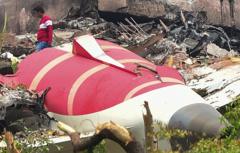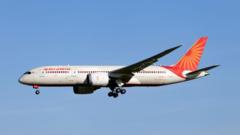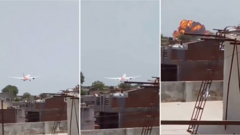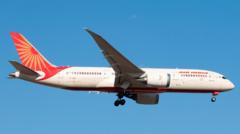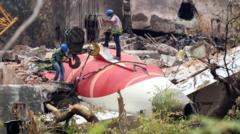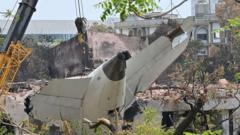The Air India Flight 171 crash investigation intensifies as experts sift through wreckage and analyze data from the cockpit recorders to determine the sequence of events leading to the accident, which occurred just 30 seconds after takeoff. Multiple theories are being considered, from engine failure to pilot error, as the aviation community watches closely for the findings.
Unraveling the Mysteries of the Air India Flight 171 Crash
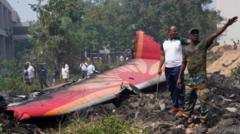
Unraveling the Mysteries of the Air India Flight 171 Crash
Investigators delve into the complex factors behind the Air India Boeing 787 disaster in Ahmedabad, raising critical questions about aviation safety.
The Air India Boeing 787 crash in Ahmedabad has raised serious concerns about safety in the aviation sector, inviting scrutiny from investigators and experts alike. The aircraft, which plunged into a busy neighborhood shortly after taking off, had been airborne for a mere 40 seconds. The investigation is now focused on decoding the wreckage, alongside analyzing flight data and cockpit voice recorders, to ascertain what went wrong during those crucial moments.
The ill-fated Air India Flight 171 took flight at 13:39 local time, with 242 individuals and a substantial fuel load on board. Following its ascent, a mayday call alerting authorities of trouble was made just moments before the plane spiraled down and crashed. Former Aircraft Accident Investigation Bureau investigator Captain Kishore Chinta noted the rarity of such an incident: a controlled flight into terrain mere seconds after takeoff, suggesting that this air disaster is unlike any seen before.
Investigators are weighing several hypotheses regarding the cause of the crash. Potential factors being explored include engine failure possibly due to bird strikes or fuel contamination, improper flap management that could have hindered lift, a maintenance blunder, or even a crew error that might have cut fuel supply to the engines. Finding answers will require a meticulous examination, where physical evidence from the crash site will be matched with performance data from the aircraft.
Experts emphasize that the first clues could emerge from the state of the two engines found in the wreckage. Investigators will assess whether the engines were operational at the time of impact, as the condition of the turbines can disclose critical information. Furthermore, the Enhanced Airborne Flight Recorders (EAFRs) are expected to provide valuable insights into cockpit activities, engine performance, and flight operations—all pivotal to reconstructing the events leading to the tragedy.
If data shows the engines were providing full power, the inquiry will likely narrow in on the aircraft's configurations, particularly the flaps which are crucial for a safe takeoff. The Boeing 787 utilizes a sophisticated flight management control system, and any systemic issues could pose wider implications for the global fleet of this aircraft model.
Despite apprehensions, India's civil aviation ministry has indicated that recent inspections revealed no major safety concerns with the Boeing 787 fleet, urging a thorough yet balanced investigation. Moving forward, a mix of Indian and international investigators—including experts from Boeing and the U.S. National Transportation Safety Board—will collaborate to examine every aspect, from maintenance records to pilot training histories. Although early indicators may emerge, definitive conclusions about the crash's cause will take time to finalize, reflecting the increasing complexity and technological advancements in aircraft investigations.


